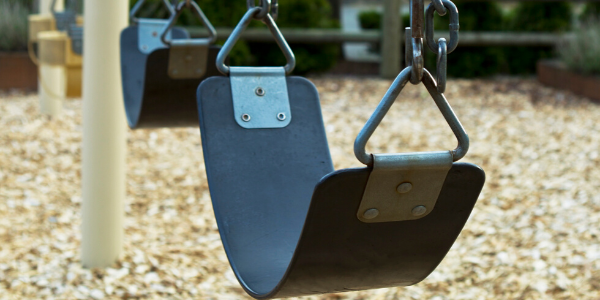April is National Child Abuse Prevention Month. In the time of stay-home orders and closed schools, children are walking a tightrope without a safety net. They are more at risk than ever before for abuse and neglect. The network of public services like schools, after school programs, and health care providers that weaves together a safety net for children is significantly altered, leaving children out of view and potentially in distress. Public sector ombudsman professionals around the country now call upon communities, neighbors, delivery persons and anyone with the opportunity, to check-in on children.
State and local ombudsman around the country, some dedicated specifically to children, investigate and resolve concerns related to state and county government, including the care and protection of children. The goal is always creating a better system. The COVID-19 pandemic has significantly altered the play book for state response and government oversight. We acknowledge the increasingly challenging, critical work state and local child welfare agencies do every day to protect children. However, we also understand, based on our work, that these agencies do not have the resources to check on every child. In order to keep all of our children safe, we need each of our communities to be the eyes and ears of those agencies to ensure everyone gets out of this pandemic safely.
Reports of abuse and neglect have significantly declined across the country. We wish that were good news, but it is likely not. Teachers and other safety net reporters are not seeing the children and therefore they are not making the calls. Not only is risk of harm still there, it is heightened. We know from events like Hurricane Katrina and Super Storm Sandy, that when families experience increased stress related to disrupted family routines, food insecurity, unemployment, and the collective unknown caused by the state of a national emergency, children are undoubtedly at increased risk to feel the brunt of that stress. We must all acknowledge that children at home, out of sight, during this kind of instability, are at increased risk of abuse or neglect. We must all be alert and watchful for signs.
Despite stay-at-home orders and restrictions on social interaction, there are still ways that you can help and minimize stress. Call, E-mail, text, video-chat, or shout over the fence from next door to your neighbors, “You doing okay? Are you safe?” Check in with parents you know are home with their children; acknowledge their stress and compliment their efforts, however small. Encourage people to create at-home routines to help structure the family’s day. Share contact numbers for local housing, medical, food or mental health resources. Drop-off supplies, such as toilet paper, milk or a coloring book. Review your state’s child abuse and neglect reporting laws. Check out initiatives like the Know and Tell Initiative at Knowandtell.org. They offer an excellent national on-line training course for identifying and reporting abuse and neglect – take the time to complete it. Contact your state ombudsman or child advocate office with questions or concerns about state agencies charged with protecting children. For more information about whether your state has a Children’s Ombudsman or Child Advocate, visit the National Conference of State Legislature’s webpage. Importantly, remind families that this will end. Everyone needs hope to get through a rough time.
And if you are feeling frustrated or at-risk of harming your child:
- Take a walk outside if it is safe to do so
- Listen and/or dance to music
- Take a break from your child in another room, or place your infant in a crib for a few moments
- Play a game, or watch a funny show
- Call a friend, family member, doctor or help-line.
When the pandemic recedes, states should prepare for an influx of reports. As children return to school and community activities, there is likely to be a rise in reports and correspondingly, in the need for increased family supports and foster families to assist in recovering family function.
Today, we may be asked to remain home and limit our contact with each other, but we are still one community. Physical distance prevents the spread of the virus, social distance increases isolation and stress. Take safe steps to remain socially connected. We all have a community responsibility to ensure children are healthy, safe, and thriving. The safety net we weave should be one that prevents child abuse and neglect, and strengthens the system and support for families when they need it most.
Stephanie Villafuerte
Office of Colorado’s Child Protection Ombudsman – https://co-cpo-dirty.local/
Patrick Dowd
Washington State Office of the Family and Children’s Ombuds – https://ofco.wa.gov/
J. Kate Burkhart
Alaska State Ombudsman –https://ombud.alaska.gov/
Ann H. Adams
Office of Community Relations (Ombudsman’s Office), Connecticut Department of Children and Families – https://portal.ct.gov/DCF/OCR/Home
Jennifer Sheriff
Office of the Lucas County Ombudsman, Ohio
Marianna Abraham
Ombudsman Child and Family Services Agency, Washington, D.C. – https://cfsa.dc.gov/service/be-heard
Moira O’Neill
New Hampshire Office of the Child Advocate – https://childadvocate.nh.gov/
Diane D. Welborn
Ombudsman, Dayton and Montgomery County, Ohio – www.dayton-ombudsman.org/
Kristie Hirschman
Ombudsman, Iowa Office of Ombudsman – https://www.legis.iowa.gov/Ombudsman/
Raven McKinley
Office of Foster Care Ombudsman, Texas Health and Human Services – hhs.texas.gov/ombudsman
Maria Z. Mossaides
Massachusetts Office of the Child Advocate – https://www.mass.gov/orgs/office-of-the-child-advocate

